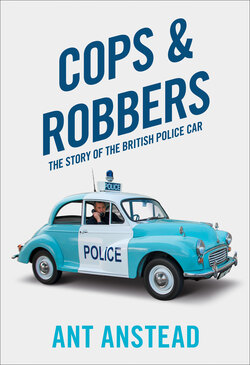Читать книгу Cops and Robbers - Ant Anstead - Страница 10
Arnold Motor Carriage Sociable, Chassis Number 1, MT20
ОглавлениеEngine: 1200cc single cylinder with open crank case and separate water jacket.
Power: 1.5bhp@650rpm.
Range: 60–70 miles on one tank of ‘Benzoline’ oil, as early petrol was called. This cost 2s 6d per gallon in 1896.
Ignition: Electric, with enough current stored in two 2-volt accumulators to run the car for approximately 600 miles. The concept of a charging system was not initially included.
Max speed: Approximately 12mph, able to average 10mph comfortably.
Transmission: Fiat belt with movable bearings to take up slack.
Production: 12 examples made between 1896 and 1898, plus a small number of related vans.
After being development-tested in Ireland in order to avoid further persecutions by the local constabulary, Arnold Number 1 was sold to engineer H. J. Dowsing and became the first car ever fitted with an electric starter motor, called a Dynomotor. Amazingly, this was originally designed as an electric ‘help motor’ to give the car greater power when needed for hills. Yes, the concept of the petrol-electric hybrid so trumpeted by the Toyota Prius in recent years was in fact invented in 1897 by Dowsing, although its development was not pursued at that time.
Remarkably, this original car has still only had five owners from new: the Arnold Company, Dowsing, a Captain Edward de W. S. Colver, RN (Rtd), who partially restored the car after buying it from Dowsing in 1931 and whose family sold the car to the Arnold family at auction in 1970. In the mid-1990s it was sold to Tim Scott, who retains ownership today and uses it regularly on the London to Brighton run and other events.
With pollution from cars a regular topic in the TV news, and even a consideration in political campaigning, it seems counter-intuitive to say that the car was bound to catch on because it was so much cleaner than the alternative, but that’s exactly what happened. The alternative, which had existed for many years, consisted of wading through a horse-manure-based, and extremely pungent, soup. Period dramas on TV skim over this, but it was definitely a factor in the growth of motor-car use, and compared to getting horse manure all over your skirt or trousers, car exhausts must have seemed amazingly clean and green!
However, UK legislation initially made the technical and physical progress of mechanised transportation difficult, whether powered by gasoline (the word petrol did not enter use until it was patented by Messrs Carless, Capel and Leonard of Hackney Wick in 1896), steam, electricity or even coal dust. In 1865 the Locomotive Act (Red Flag Act) had introduced a speed limit of 2mph in towns and villages and 4mph elsewhere. It stipulated that self-propelled vehicles should be accompanied by a crew of three: the driver, a stoker, and a man with a red flag walking 60 yards ahead of each vehicle. The man with a red flag or lantern (when dark) enforced a walking pace, and warned horse riders and horse-drawn traffic of the approach of a self-propelled machine. After centuries of animal training and use, both the politicians and general population trusted a well-trained horse far more than these newfangled steam-driven road locomotives!
Parliament thus effectively framed legislation that trusted the established system, horse-drawn wagons, and prevented the scaring of horses, which were then the backbone of commerce. The country’s legislators put more trust in the behaviour of horses than in the safety of human-designed and built machinery … This seems amusing to modern sensibilities, but perhaps they were right to create these laws, for these early machines weighed an enormous amount, had little in the way of brakes and made all sorts of scary clanking and hissing noises which could spook even the best-trained horse. However, the development of smaller petrol and electric carriages made this law outdated by 1890, and it was this law that was most often tested by pioneer motorists who claimed they could use an Autocar on a standard (horse-drawn) carriage licence rather than the much more restrictive Locomotive Licence. Arnold also claimed this and was convicted of this offence as well as speeding. This Arnold chap is my type of guy. I like to think we would have been friends.
Although the use of motor cars was growing in the 1890s, the horse was king and would effectively remain so (at least in volume terms) until after World War I, which was, like so many conflicts, the catalyst that drove change technically, economically and socially.
